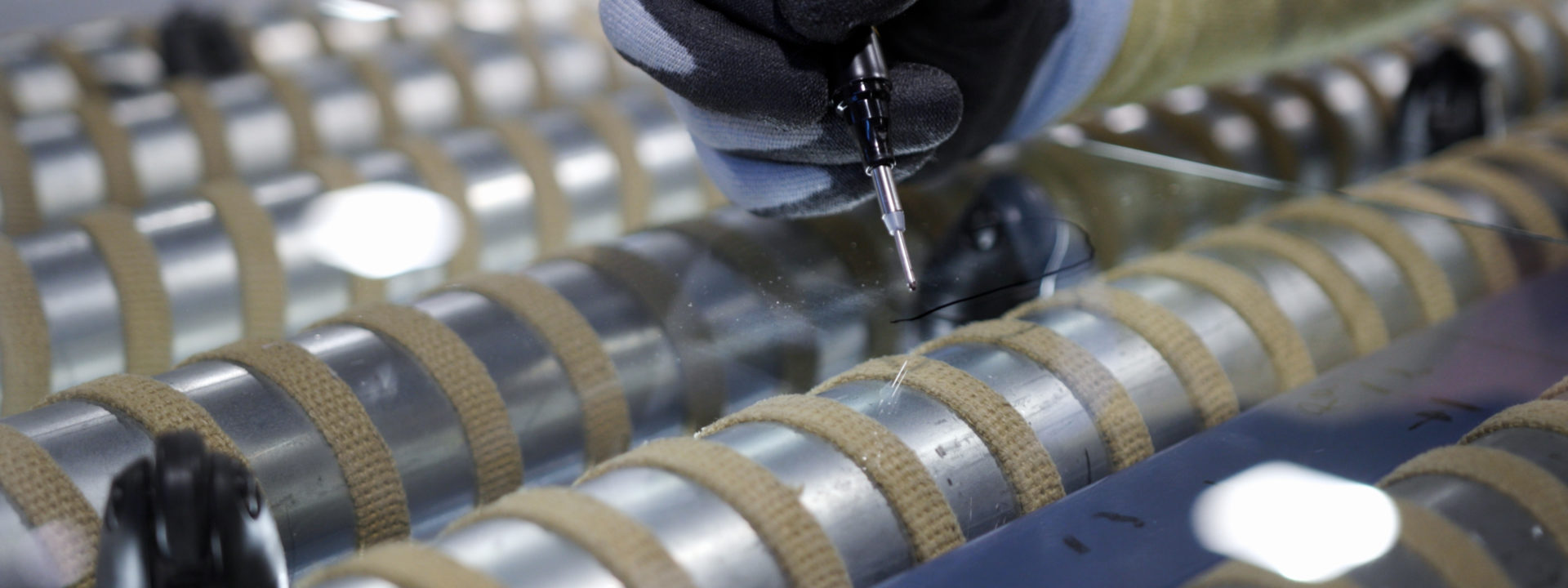
Industry demand for impeccable glass quality has increased notably over the last years. Customer expectations run high, forcing glass processors to strive for ever-stricter quality control and ensure minimal rejection rates for finished products. Anisotropy is a good example of this development: going from an abstract and subjective phenomenon towards measurable and objective quality item.
In a way white haze is very similar to anisotropy: subjective phenomenon with a mystical name that hasn’t been possible to be quantified. With all of its possible root causes, correcting white haze issues in production isn’t made any easier by the fact that each expert has slightly different idea what kind of haze is an issue. With the ever-tightening quality requirements of the industry, there’s a bigger demand than ever to solve this.
Our earlier blog posts cover the basics of the phenomenon. In short, white haze describes vague hazy areas or repetitive stripes that sometimes occur on glass after tempering. These areas have different degrees of visibility, from very mild hazy patches to well-defined marks.
From a structural point of view, glass with white haze is still a good piece of glass that functions well. And earlier, glass with such effects was often deliverable.
Things have changed. Most markets today have zero tolerance of products with clearly visible defects. This has pushed the industry to look for technology capable of recognizing the issue early – before the whole batch is wasted or shipped.
This spring, such technology has emerged.
The White Haze Scanner introduced by Glaston & Softsolution is the first AI based solution to give you high-quality visual indications of where white haze appears on processed glass. The scanner uses a neural network developed in collaboration with the global glass industry to categorize the severity of the detected white haze.
For the first time ever, you can detect and quantify white haze on tempered glass.
Developed in Finland in collaboration with the industry, the brand-new AI based solution categorizes defects by strength into three intensity levels.
“Mild” is a barely visible effect not normally considered a problem by the industry.
“Medium” indicates slightly visible haze that might require external light to be seen. Such glass can often be undesirable, especially for quality-oriented customers.
Finally, “strong” indicates clearly visible haze that even a non-trained eye can easily spot from the glass. In most cases, tempered glass with such defects is considered unacceptable to the customer.
The white haze scanner provides a graphical glass overview with out-of-tolerance values highlighted. Such comprehensive analysis – including history data – helps you define your own quality standards and contributes toward a unified glass industry haze standard.
One of the biggest advantages of the scanner is that the system instantly notifies you of an issue. And while the detected categories are based on common view of the glass industry, every producer is able to define their own quality standards and alerts based on category, location as well as size of the detected hazes.
This means that glass processors can react immediately when a non-acceptable haze is detected. The processing line can be stopped, checked and the issue leading to white haze resolved. This helps minimize waste and production reruns – and over time, will lower production costs.
This automated control relieves operators of complex, time-intensive tasks that are difficult to accomplish consistently. Plus, the automated solution is more accurate than manual inspections. As a result, it frees up resources and further increases productivity.
It is fascinating to see the industry make effective use of technological innovations such as AI in its ongoing response to customer needs.
With tools like the white haze scanner, we can all contribute to further development of quality standards.
And just as important, we have the chance to improve our business with smarter, more flawless operations.
Sign up for Glastory newsletter
We answer your questions about glass processing. Let us know your challenges and we promise to do our best to help you.
Comments are closed.